One of the top tourist attractions of Jaipur, the huge Amer Palace Fort sits atop a small hill, and is located at a distance about 11 km from the main city. The magnificent Amer Fort is an extensive palace complex that has been built with pale yellow and pink sandstone, and with white marble. The fort is divided into four main sections that are graced with their own courtyards.
There are a lot of attractions for one to see at the Amer Fort, including the diwan-e-aam, such mandir, and the Sheesh Mahal. Amer Fort is also home to some underground tunnels that connect Amer to Jaigarh Fort. A part of these tunnels as been restored, and is now open to public as well. Encompassing all this, the Amer Fort is a perfect example of Rajasthani architecture which is a must-visit. The essence of Amer Fort is encapsulated by the beautiful light and sound show within the fort, where visitors get to see an astounding spectacle about the history of the fort.
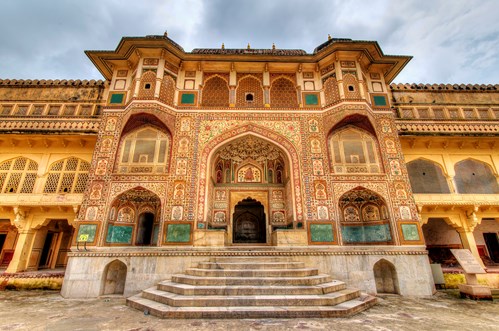
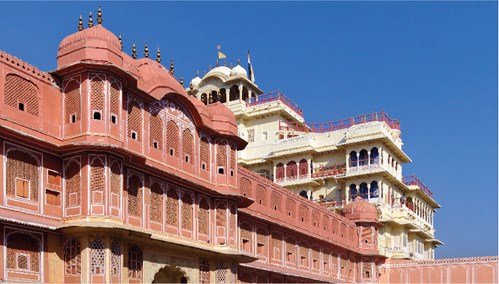
Located deep within the walled city, the City Palace Complex was conceived and built by Maharaja Sawai Jai Singh II, the founder of Jaipur. A beautiful fusion of Mughal and Rajput architecture, the palace is still home to the last ruling royal family which lives in a private section of the palace.
The majestic Hawa Mahal, or the Palace of Winds, is often the first visual that comes to mind when one thinks of the Rajasthan's capital of Jaipur. The ‘pink city as Jaipur is popularly known, presents a beautiful marriage of history, heritage and architectural splendour, with the rose-tinted sandstone Hawa Mahal standing tall among one of the most visited and unique monuments.
However,not many know that the 300-plus jharokhas (portholes) that form the very memorable façade of the monument that attracts tens of thousands of tourists from around the world each year, is actually its back side. Moreover, even the front façade doesn’t serve as a direct entrance, and one has to enter from the side of the City Palace, of which it is a part.
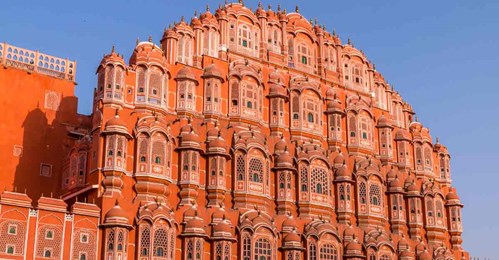
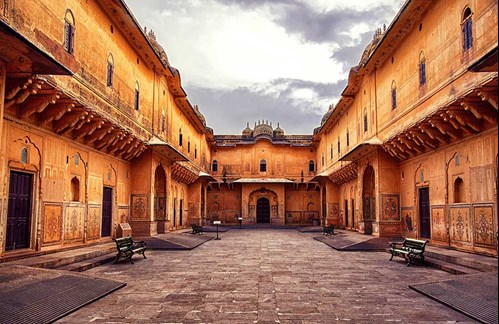
Built in 1734 AD by Maharaja Sawai Jai Singh II, Nahargarh Fort along with Amer and Jaigarh forts used to form an important defence ring for the city. Located on one of the oldest hills of Aravalli, this fort offers breath-taking views of the Pink City.
There are many buildings and structures within Nahagrah fort. There is a temple inside the fort, dedicated to the Rathore prince, Nahar Singh Bhomia. Another attraction in the fort is the Madhavendra Bhawan built by Sawai Madho Singh and Diwan-I-Aam, an open air enclosure where the king met the common men and listened to their problems and complaints.
Jaigarh Fort is situated on the promontory called the Cheel ka Teela of the Aravalli range; it overlooks the Amer Fort and the Maota Lake, near Amer in Jaipur, Rajasthan, India. The fort was built by Sawai Jai Singh in 1726 to protect the Amer Fort and its palace complex and was named after him.
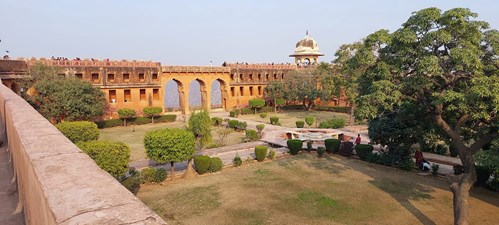

The Jantar Mantar, Jaipur is a collection of 19 astronomical instruments built by the Rajput king Sawai Jai Singh II, the founder of Jaipur, Rajasthan. The monument was completed in 1734. It features the world's largest stone sundial, and is a UNESCO World Heritage site. It is near City Palace and Hawa Mahal.
The Albert Hall Museum in Jaipur is the oldest museum of the state and functions as the state museum of Rajasthan, India. The building is situated in Ram Niwas garden outside the city wall opposite New gate and is a fine example of Indo-Saracenic architecture. It is also called the Government Central Museum

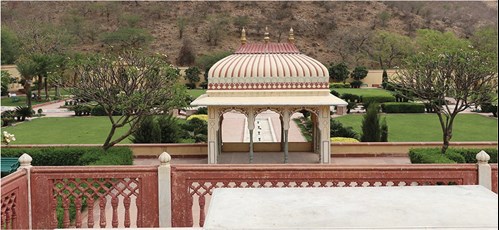
Sisodia Rani Garden and Palace is a palace garden 6 kilometres from Jaipur city in of Rajasthan state in India. It was built by Maharaja Sawai Jai Singh II in 1728. The place consists of tiered multi-level gardens with fountains, watercourses and painted pavilions.
Jal Mahal is a palace in the middle of the Man Sagar Lake in Jaipur city, the capital of the state of Rajasthan, India. The palace was originally constructed in 1699; the building and the lake around it were later renovated and enlarged in the 18th century by Maharaja Jai Singh II of Amber.
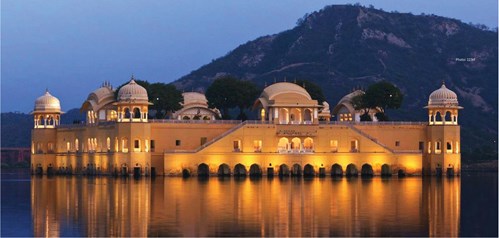
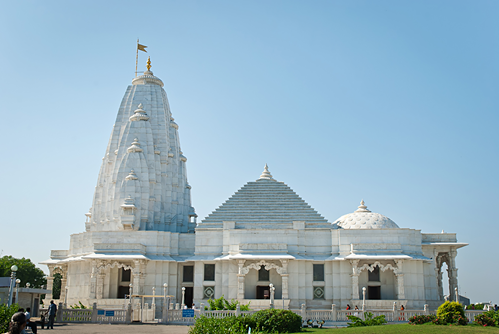
Birla Mandir refers to different Hindu temples or Mandirs built by the Birla family, in different cities across India. All these temples are magnificently built, some of them in white marble or in sandstone.
